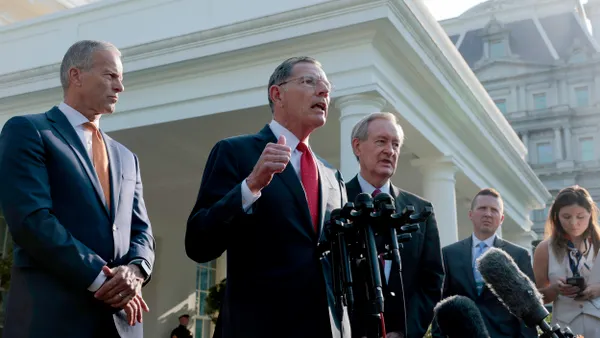Editor's Note: The following is a guest post from Gary Shapiro, president and CEO of the Consumer Technology Association. He is also the author of Ninja Future: Secrets to Success in the New World of Innovation.
In the fall of 2017, three events changed how I think about preparing for and recovering from disasters. First, in September, Hurricane Maria devastated Puerto Rico. Two weeks later in early October, 58 people were killed at an outdoor concert in Las Vegas — a city near and dear to me as the home of CES. And later that month, I was in Napa Valley for our board meeting when wildfires ravaged the area near our hotel.
Our accelerated and abbreviated meeting went forward without power or cell service. Our smoky evacuation had us driving near active fires. Sadly, the fires took dozens of lives and consumed thousands of homes.
In the wake of these tragedies, I began to think about resilience — the ability to avoid, withstand and recover from traumatic events — and the urgency for the technology industry to evolve with this concept in mind.
If “innovation” has been the buzzword of the decade, “resilience” is the watchword of the future. And it was a major theme of CES 2019 in January, where the new Resilience Conference and Exhibition highlighted technologies that are helping communities, towns, cities — and even nations — avoid, prepare for, respond to and recover from natural disasters and public emergencies.
Innovation is fundamental to growth and progress. But innovation on its own is not enough. We can, to an extent, channel innovation to help us avoid some risks and prepare for others. We know the climate is changing. But less predictable events will occur — natural disasters, political unrest, economic uncertainty — and we can lessen the impact of these challenges by planning ahead.
Many organizations are adding resilience into their missions and corporate models. Breakthrough Energy Ventures, the venture capital firm started by Bill Gates, tapped Dr. Carmichael Roberts, a serial entrepreneur and material sciences expert, to lead its investments in companies that offer solutions to energy dependence and promote resilience.
And at CES, attendees tried out the Impossible Burger, a plant-based substitute to a hamburger which aims to give people the taste and nutritional offered by meat without the negative environmental impacts. Other companies and institutions are just now putting serious thought into their resilience strategies. For them, the products, systems and innovations displayed at CES helped them strategize for the future — if they are willing to step up to the challenge.
Businesses, as well as cities and countries, must plan and persevere to survive. Extreme weather events, for example, have increased, costing $200 billion a year globally. A World Bank report estimates that by 2030, climate change and natural disasters could cost cities $415 billion a year.
This year at CES, we focused not only on smart cities but also on resilient cities. CES celebrated the technologies that facilitate preparedness and recovery, shaping urban design and strengthening critical infrastructure. We met Breakthrough Energy, a venture capital fund focused on developing energy solutions that don’t contribute to climate change, and Zero Mass Water, a company that pulls water from sunlight and air.
As extreme weather conditions, power outages and cyber intrusions grow more common, we need to think seriously about how we can strengthen our resilience.
Thinking ahead helps make the unexpected expected. It’s not just about peace of mind. It’s about knowing that, in the face of tragedy, preparedness and resilience can keep our cities, communities and homes safe, powered, warm and secure.









